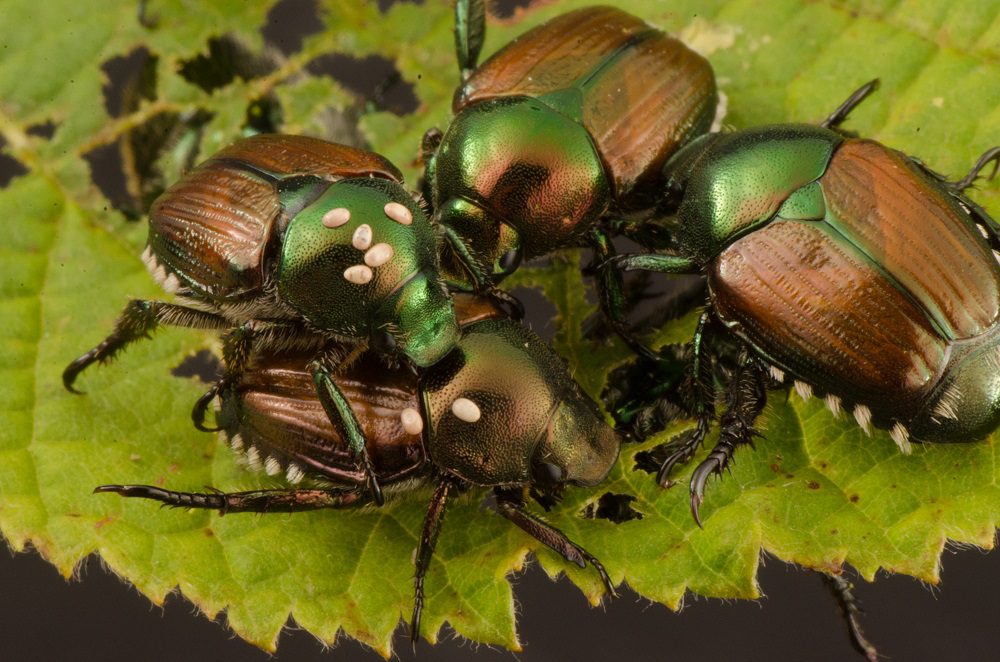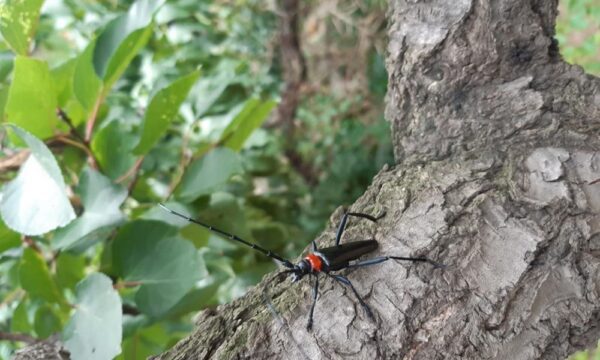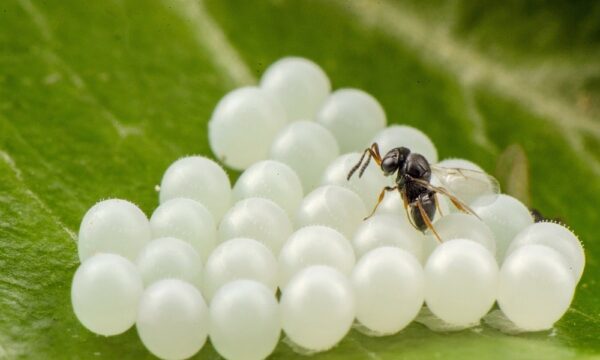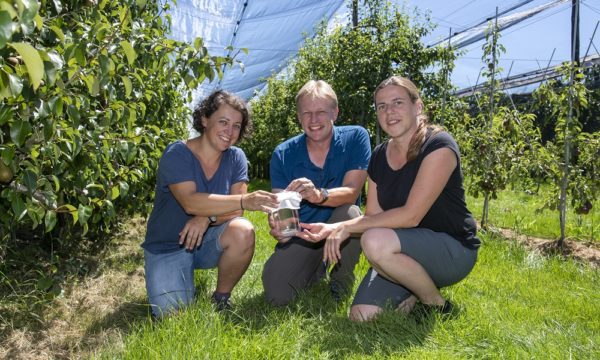
It may look pretty but the Japanese beetle (Popillia japonica) is one pesky pest – which feeds on the foliage and fruits of hundreds of fruit tree species – that in the USA alone costs a staggering $450 million a year to control.
But CABI scientists from its centre in Switzerland are preparing to fight back by exploring the use of the parasitic fly Istocheta aldrichi as classical biological control agent against the Japanese beetle, in Switzerland, where it arrived in 2017.
Dr Tim Haye, Head Arthropod Biological Control, said the project ‘Classical Biological Control of Japanese Beetle’ will assess the host specificity of I. aldrichi and its potential non-target effects in Switzerland.
It will also evaluate the climate suitability of Switzerland for establishment of the parasitoids, the host-parasitoid synchronization in the field, and the potential competition with native parasitoids of adult beetles.
The Japanese beetle is native to Japan and Russian Far East and was accidentally introduced to North America in the 20th Century. It has since caused considerable damage to crops including grape, plum, cherry, blackberry and raspberry.
In fact, the Japanese beetle – was first recorded in Europe in the Azores in the 1970s where it succeeded in establishing itself despite the immediate measures taken to eradicate it – is also a nuisance to parks, lawns, golf courses, landscapes, nurseries and farms.
In 2014, this invasive species was found in Parco del Ticino, near Milan, Italy. It then spread towards Switzerland and six years ago was caught for the first time in precautionary traps set up in Stabio, Ticino on the Swiss border.
It is feared that the Japanese beetle may also spread to central Europe, including some areas of Switzerland, north of the Alps, due to climatically suitable conditions modelled by Kistner-Thomas in 2019.
Accordingly, the European Food Safety Authority (EFSA) and the Joint Research Centre of the European Commission have declared the Japanese beetle as a high priority pest in the EU in the new EU Plant Health Law.
Dr Haye said, “The Horizon 2020 EU-project ‘IPM-Popilla,’ led by Agroscope, is currently focusing on fast and reliable monitoring tools and developing an Integrated Pest Management (IPM) Toolbox for controlling the Japanese beetle.
“However, the project doesn’t cover the classical biological control aspect – which aims to introduce specific natural enemies from the pest’s native area – to manage and reduce the risk of the Japanese beetle decimating fruit crops.”
Dr Haye added that I. aldrichi, which is also native to Japan, lays its eggs on the pronotum – mostly on the adult female – causing on average 30% to nearly 100% parasitism.
“Since its introduction into New Jersey, USA, in the 1920’s parasitism has usually been lower because the adults emerge several weeks too early as related to the emergence period of the beetle. But, in northern Japan, the parasitoid and its host are fully synchronized,” Dr Haye said.
He stressed that this lack of synchronization is most likely due to climatic differences between the area of origin and the area of introduction. Interestingly, he added, while the beetle and its parasitoid migrate to colder areas in northern USA and Canada, which are climatically more similar to northern Japan, parasitism is increasing.
CABI’s initial investigations have attracted the attention of the Swiss Radio and Television (SRF) who filmed a news item highlighting how his work in Switzerland could pave the way for a I. aldrichi to be approved as a classical biological control agent for Japanese beetle.

The Swiss Radio and Television (SRF) crew with Dr Tim Haye (centre) and Riccardo Valenti (MSc student from ETH Zurich – second right) take a break during filming for the news item showing CABI’s work on the Japanese beetle (Credit: CABI).
Additional information
Main image: The Japanese beetle (Popillia japonica) pictured here parasitized. The insect is a destructive pest that feeds on the foliage and fruits of hundreds of species of fruit trees (Credit: Tim Haye).
Swiss Radio and Television (SRF) report on the Japanese beetle
Related News & Blogs




